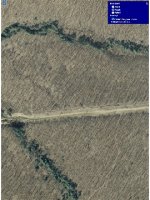If you've ever walked through a hemlock stand:
- cooler in summer and warmer in winter, for sure. By several degrees. It's immediately apparant as you leave hardwoods and go into the pines.
- the ground feels "spongy". And it is. As the needles decompose they form a soil that holds a lot of water. The landscape is kind of cratered too, so most water puddles up and soaks in rather than run straight off, just the way the root system works. Water loving trees change the forest to be wetter. It helps eliminate runoff and keep flows steadier in summer, keeps the water clear, reduces sedimentation, etc. Most pines do this, not just hemlocks, but the fact that hemlocks like to line streams is a happy circumstance.
- Their root systems really like to go right up to streams, and hemlock forests create a nice trout habitat with undercuts, root structures, gentle meandering, highish banks. Rather than a "straight chute" like you see in a lot of hardwood stretches.
- They do tend to make a stream slightly more acidic, I think. I associate hemlock laden streams with brookies, not browns. Not sure what's cause and effect here, admittedly. But throw some hemlock boughs in your compost pile and it gets more acidic, that's a fact. I've gathered needles and spread them around blueberry bushes (which like acidic soil).
You read the old timy descriptions of PA and even our larger waterways, which get way too warm now, had wild brookies. Plus much of the forest was pines in general with a lower % of hardwoods, before the logging boom. I think those 2 facts go hand in hand. A more pine laden forest means more steady flows and temperatures in our streams throughout the seasons.





